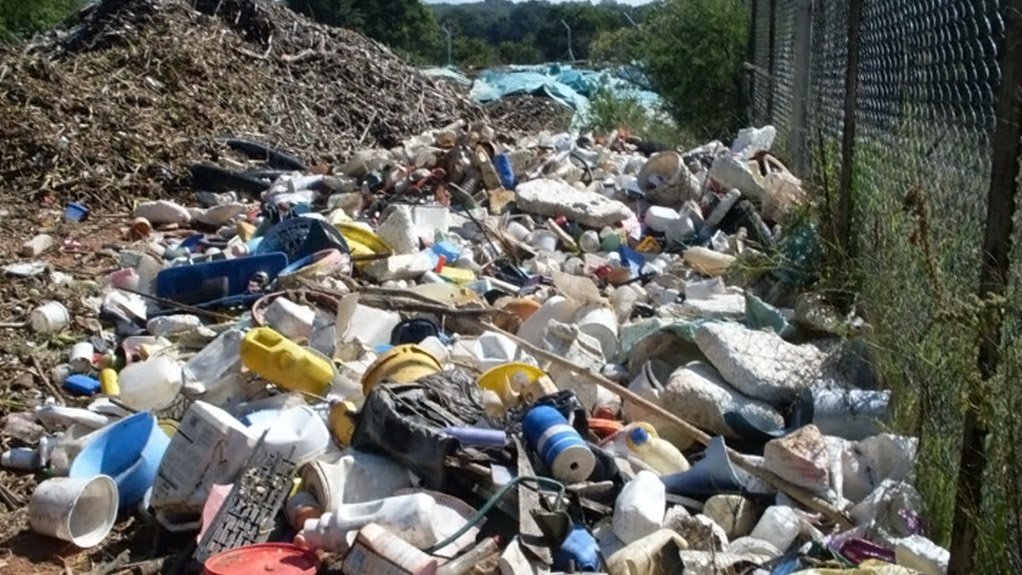Hartbeespoort dam remedial programme showing signs of progress


CLEANING UP The DWA and Rand Water have removed 1 000 t of litter and debris from Hartbeespoort dam and its shores
Members of the media from Finland, Zambia, Nigeria, Serbia, Tanzania and the UK toured Hartbeespoort last month to familiarise themselves with best environmental practices in South Africa, Botswana and Namibia.
The group was invited to participate in the briefing on the outcomes and achievements that resulted from the turnkey solutions implemented through the Hartbeespoort Dam Integrated Biological Remediation Programme (HDRP), which was started in 2007 by the Department of Water Affairs (DWA), with Rand Water as the implementer since 2006. The programme is also known as ‘Metsi a me’.
The visit included an overview of the water resource challenges of modern civilisation with regard to global warming and desertification, and the outcome and successes of the HDRP.
Hartbeespoort dam was selected to be part of this international visit because of its successful remediation methods and links to the North South Programme, which has supported the dam’s remediation process through technical support and skills transfer, and is funded by the Finnish Ministry of Foreign Affairs.
The DWA and Rand Water have, since the start of the project, removed 177 t of undesired fish from the dam, 27 500 t of hyacinths, 1 000 t of litter and debris, and 16-million litres of algae soup. They have also constructed 2 066 m2 of floating wetlands and constructed nine algae booms and a litter trap.
The resource management plan for the dam is based on the basic principle of ecosystem improvement for human and environmental needs, which is endorsed by the DWA and environmental legislation to protect and rehabilitate its biodiversity.
According to DWA legislation and its resource quality objectives, the carp fish is an exotic species with a negative critical impact on aquatic habitats and other biota in the dam.
Since the introduction of the shoreline and food-web reconstruction, clear water states in the dam are more prevalent and prolonged, with the dominant algae being the more desirable long-stranded filamentous algae, spirogyra.
Comments
Press Office
Announcements
What's On
Subscribe to improve your user experience...
Option 1 (equivalent of R125 a month):
Receive a weekly copy of Creamer Media's Engineering News & Mining Weekly magazine
(print copy for those in South Africa and e-magazine for those outside of South Africa)
Receive daily email newsletters
Access to full search results
Access archive of magazine back copies
Access to Projects in Progress
Access to ONE Research Report of your choice in PDF format
Option 2 (equivalent of R375 a month):
All benefits from Option 1
PLUS
Access to Creamer Media's Research Channel Africa for ALL Research Reports, in PDF format, on various industrial and mining sectors
including Electricity; Water; Energy Transition; Hydrogen; Roads, Rail and Ports; Coal; Gold; Platinum; Battery Metals; etc.
Already a subscriber?
Forgotten your password?
Receive weekly copy of Creamer Media's Engineering News & Mining Weekly magazine (print copy for those in South Africa and e-magazine for those outside of South Africa)
➕
Recieve daily email newsletters
➕
Access to full search results
➕
Access archive of magazine back copies
➕
Access to Projects in Progress
➕
Access to ONE Research Report of your choice in PDF format
RESEARCH CHANNEL AFRICA
R4500 (equivalent of R375 a month)
SUBSCRIBEAll benefits from Option 1
➕
Access to Creamer Media's Research Channel Africa for ALL Research Reports on various industrial and mining sectors, in PDF format, including on:
Electricity
➕
Water
➕
Energy Transition
➕
Hydrogen
➕
Roads, Rail and Ports
➕
Coal
➕
Gold
➕
Platinum
➕
Battery Metals
➕
etc.
Receive all benefits from Option 1 or Option 2 delivered to numerous people at your company
➕
Multiple User names and Passwords for simultaneous log-ins
➕
Intranet integration access to all in your organisation


















